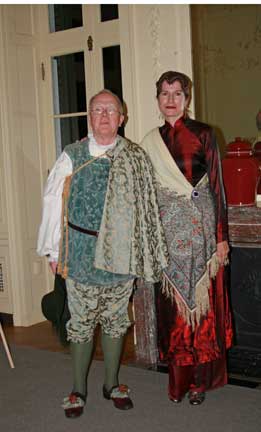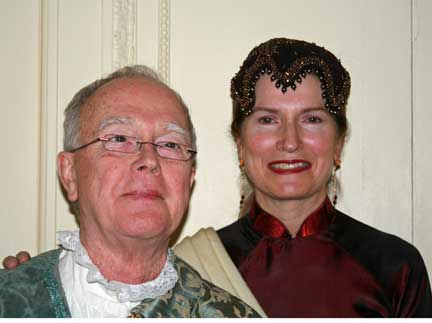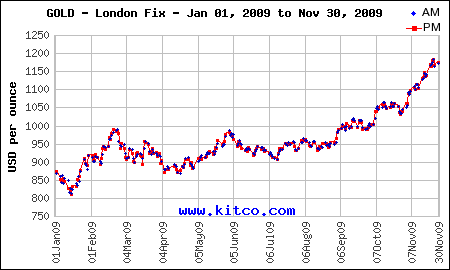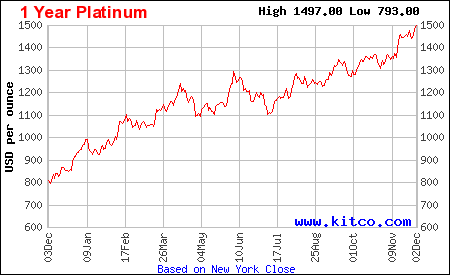Monthly Archives: December 2009
The French Blue, A reading straight from the 17th Century

Baron Jean Baptiste Tavernier (George Bergen) dressed in authentic 17th Century supplied by Shakespeare & Company and Rebekah Wise dressed in a beautiful russet silk Oriental Ao Dai
More From The Gala Book Launch of The French Blue
Actor George Bergen reads from chapter 7, The Diver from Richard Wise’s just released historical novel, The French Blue. Click below and enjoy!
French Blue Reading on Video
Gold Up 65% Since Last Holiday Season, Double Whammy for Jewelers:
by Richard W. Wise © 2009
Jewelers have been hit with a double whammy. Gold prices, which tipped the scales at $800 per ounce in December last year, have topped $1200, a 65% increase in the midst of the worst sales turn down in memory. Note I didn’t mention the Great Depression. Contrary to popular belief, I was not alive during the depression and I have yet to see a soup line in The Berkshires, but I can say that jewelers have taken a big hit. Couple that with the fact that prices are rising rapidly on gold stock and jewelry in general. Jewelers must either increase prices or find themselves unable to restock sold items. For goldsmiths, it means a substantial increase in cost. Materials are normally 30% of the price of finished handmade jewelry.
Platinum Prices Punish Jewelers:
Platinum prices have seen a spectacular run-up since last December. By law, jewelry marked platinum must be at least 90% pure. 14k gold is 58% pure and 18k gold is 75% pure. Added to this platinum is 40% denser, meaning that a 1×1″ cube of platinum weighs 40% more than a one inch cube of pure gold.
Platinum has unique working characteristic which means it normally takes about twice the time to create a platinum piece identical to one created in gold. Consumers looking to save money on jewelry in white metal should consider 18k white gold. New white gold alloys no longer have the yellowish tint of older white alloys and are pretty much impossible to separate by eye from platinum.
The French Blue, Video Reading Now Available
November 19th, Gala kickoff, reading and books signing for The French Blue hosted by the Edith Wharton foundation, The Mount drew and overflow crowd. Rebekah Wise served as master of ceremonies introducing actor George Bergen, who dressed as the novel’s protagonist, 17th Century gem merchant/adventurer, Jean Baptiste Tavernier, read selections from Richard Wise’s newly published novel. There are three selections: Introduction, Chapter 7 The Diver, Chapter 11; The Dinner Party Coming soon, a Q&A with my humble self.
40 years and 60,000 leagues! From the seraglios of Persia to the empire of Shah Jahan:

Actor George Bergen (left) dressed in a 17th Century costume, poses with Master of Ceremonies Rebekah Wise. Bergen gave a spirited reading of selections from The French Blue to an appreciative audience at The Mount.
From the lands of the Great Mogul of India to the court of the Sun King of France. the true-to-live story of Jean Baptiste Tavernier, Madeleine de Goisse and the world’s most fabulous diamond explode across a panorama of three continents. Signed copies of Richard Wise’s newly published historical novel, The French Blue are now available at the book’s website.




